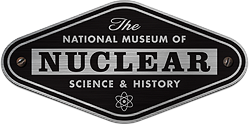Wilhelm Röntgen (1845-1923) was a German physicist and winner of the 1901 Nobel Prize in Physics.
He was born on March 27, 1845 in Lennep, Germany. He received a Ph.D. from the University of Zurich in 1869. In the first decade of his career, he taught at three different universities: Hohenheim in Württemberg; Strasbourg University; and the University of Giessen. In 1888, he went to the University of Würzburg.
Scientific Contributions
In 1870, Röntgen published his first work, which discussed specific heats of gases. He later published many other papers that dealt with a wide range of subjects including thermal conductivity of crystals, electrical characteristics of quartz, and the influence of pressure of the refractive indices of fluids.
However, he is most well-known for his discovery of x-rays. In 1895, he was examining a phenomenon that occurred when passing an electric current through a gas in an extremely low pressure tube. He soon discovered that rays (which he believed to be cathode rays) were having a fluorescent effect on cardboard coated with barium platinocyanide that he had placed around the tubes.
Röntgen conducted more experiments by placing different objects of varying sizes between the path of the rays and photographic plates. When he developed the plates he found that the thicker objects blocked more rays than thinner objects. He then asked his wife to place her hand in the rays’ path. The image cast on the photographic plates showed shadows cast by her bones and a ring she was wearing. Röntgen determined that these were not cathode rays. In fact, they were a something completely new. He called these new rays, “x-rays.”
Röntgen received the 1901 Nobel Prize in Physics for his work. His work inspired Henri Becquerel to investigate the connection between x-rays and phosphorescence. This led to Becquerel’s discovery of radioactivity, which was a jumping-off point for the study of radioactive materials during the early twentieth century, which ultimately led to the Manhattan Project.
Röntgen died in Munich, Germany on February 10, 1923.





_Wikimedia-659x1024.jpg)